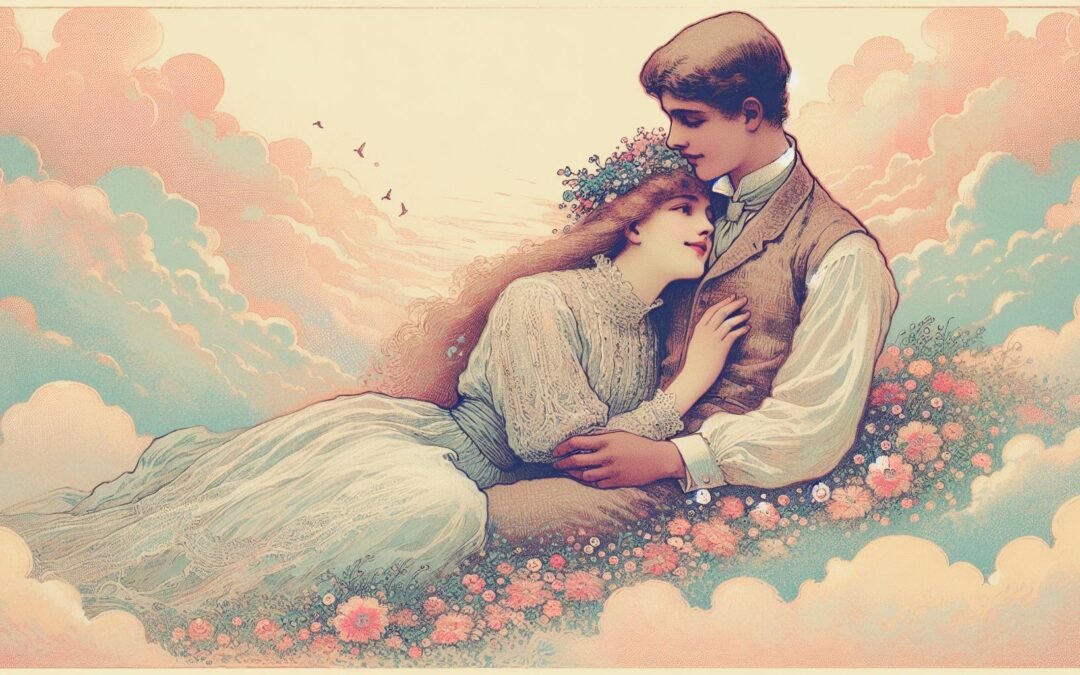In the sweep of centuries, poets address the heart that beats beside them, the contour of a marriage made vibrant through language. Women poems give voice to experiences both personal and universal. For sweet poems for wife, the muse becomes more than distant inspiration: affection, admiration, and partnership thread each stanza. These verses illuminate the rituals, symbols, and emotions of wedded love, carrying intimate meanings across cultures and generations. Anthropologists recognize the poetic traditions of love as a map of society’s values and changing definitions of commitment, with resonances found from Victorian era texts to modern, blended genres.
Sweet Poems for Wife
Epic writers of the past addressed their wives with images drawn from gardens, celestial wonders, and the glow of hearthlight. In Japan’s Heian period, elegantly brushed poems appeared within pillow books, offering glimpses of wifely affection entwined with ritual. Sumerian tablets reveal clay-etched lines where spousal ties mingle with divine blessing. Sanskrit lyricists poured union both spiritual and sensual into ancient verses, shaping shringara rasa as a celebration of conjugal joy. Traditions in the Mediterranean cultivate motifs of fidelity and longing, found in Roman and Greek expressions of partnership. Over centuries these voices braid a tapestry that continues to evolve, stretching from Rabindranath Tagore’s distilled harmonies of companionship to the understated haiku of contemporary poets.
Historic Roots and Evolution
Court poets immortalized wives as pillars of household fortune, painting devotion through gesture and gifts in cultures as varied as Persia, China, and West Africa. Ritual songs performed for nuptials and anniversaries honor the joy and complexity of marital life, from Yoruba praise poems to the ghazals of medieval Iran. Transitioning to Western Europe’s Renaissance, the beloved wife becomes not simply muse but manager of domestic fate. Shakespeare revels in affectionate paradox, fusing sensual admiration with tokens of loyalty. The Victorian pen draws a thread of longing idealized and intimate, while twentieth-century voices, such as Anna Akhmatova, challenge silence with bold declarations amid political and personal storm. In contemporary American collections, poets reinterpret the role of wife with candor and variety, opening new possibilities for the genre. For further exploration of modern expressions, Emily Dickinson poetry and her influence on spousal affection merit attention.
Major Themes and Motifs
Devotion reverberates as anchor, where steadfastness outlasts hardship, and gratitude transforms daily interaction from routine into celebration. Admiration finds its voice in praise for beauty, resilience, humor, or wisdom. Gestures as mundane as a shared morning tea, or stories spun by lamplight, become motifs for poetic meditation. Images of flowers—rose for passion, lotus for purity—signal affection wordlessly, while home and hearth offer metaphorical refuge. The motif of journey, borrowed from epics and spiritual writings, marks shared growth. For those seeking modern iterations, romantic poems for wife evoke both tenderness and individuality. Writers pair praise with playful banter, shaping a dynamic portrait that resists stasis.
Techniques in Linguistic Expression
Endearments—from the internationally recognized “beloved” to regionally nuanced pet names—create intimacy, setting a poem’s emotional timbre. The architecture of form also distinguishes sweet poems for wife. Sonnets, with their precise meter, manifest the harmonies of shared routine, while haiku seize on fleeting moments. Free verse disrupts expectations, bending poetic logic to the natural contours of conversation, as seen in the innovations of contemporary voices. Visual arrangement can mimic entwined lives, zigzagging or overlapping lines on the page. Poems infuse narrative with sensory cues—the weight of a blanket tucked late at night, the aroma of jasmine rising through an open window, the memory of laughter echoing in a quiet house. These layers of style sustain both freshness and tradition.
Tonal Variations and Emotional Range
Writers move between tones, from sincerity and reverence to mischief. Playfulness appears in teasing wordplay and shared secrets, a hallmark of evolving partnership. Reverence emerges when the wife becomes source of enlightenment or strength. By shifting tone, poems reflect the unpredictable pattern of daily lives, holding celebration alongside sorrow. The best contemporary poets expand this practice, weaving depth into domestic subjects. Sudden tonal shifts have the power to heighten emotional truth, making affection tangible and trust explicit.
Cultural and Global Perspectives on Spousal Love Poems
Sweet poems for wife transcend borders, shaped by geography, religion, and collective ideals. African praise poetry honors wives as community leaders, with oral forms prioritizing rhythm and audience engagement. East Asian marital verse intertwines emotion with duty, balancing restraint with coded imagery. South Asian collections embed poems within public ritual, where blessings are sung aloud at ceremonies and festivals. The power of these traditions lies in continual adaptation, merging old symbols with the needs of new generations. In Jewish wedding ceremonies, Song of Songs echoes through vows and blessings, interpreted and personalized across centuries.
Role of Social Norms and Religion
How poets describe wives is guided by spiritual doctrine and social boundaries. In Christian hymns or Islamic devotional poetry, the sanctity of marital union blends sacred and sensual registers, establishing thresholds both literal and symbolic. Confucian societies highlight duty and shared fortune, while Hindu writers, drawing on mythic archetypes, praise perseverance and compassion. Gendered authorship determines who speaks—women poets turning toward their beloveds subvert and enrich tradition with fresh urgency. Poetic performance and publication, once restricted to elite circles, have become remarkably democratic, further amplified by platforms such as rhyming love poems collections.
Translation and Adaptation Across Cultures
Metaphor and endearment do not always survive the leap into new languages. Translators strive to balance tone, imagery, and emotional resonance, avoiding loss of flavor or specificity. Adaptation leads to new hybrids, as in African American poetic traditions that fuse ancestral rhythms with twenty-first-century idioms of wedded love. On romantic poems to make her feel special, poets invent forms that challenge and extend global conventions, confirming the vitality and flexibility of marital verse. Across all variations, authenticity comes alive in the harmony of unique voice and borrowed tradition.
Psychological Impact and the Power of Expression
Sweet poems for wife serve as mirrors and bridges, bringing affirmation and connection to the foreground of married life. Partners respond to memorialized affection with renewed intimacy, where gratitude, gentle recognition, or memory shapes a language shared more vividly. The act of composing or receiving poems can strengthen self-understanding and open channels of vulnerability and security among couples. Readers may notice that sharing poems reconfigures everyday gestures into a shared narrative, reinforcing the bond through ritual and creativity. The interplay of word and feeling encourages resilience and the celebration of difference, weathering conflict without diminishing closeness.
Conflict Resolution and Renewal
When tension arises, poetry gives couples an avenue to voice regret, hope, or apology without confrontation. Rhyming lines or spontaneous stanzas redirect attention to shared dreams, dismantling grievances through beauty. Ritualized expression, composing or exchanging verses for anniversaries, acts as a form of emotional renewal, a practice found in cultures as diverse as Uruguay’s folk poetry and Japan’s renku. Themes that surface include forgiveness, enduring promise, and the wisdom discovered through reconciliation, all presented through the unique voice of the poet. For additional resources related to love and its resilience, infidelity in poetry offers a contrasting lens.
Affirmation and Emotional Flourishing
Poetic affirmation fuels confidence and supports growth, nurturing spouses through words that memorialize moments of courage or vulnerability. The boundaries between daily experience and literary imagination dissolve. Couples who incorporate poetry into milestones (marriages, parenthood, victories, and losses) build legacies that stretch beyond immediate experience. Exchanges of poems before sleep or morning work, or the gifting of hand-written lines, create touchstones for continued affection. Curated guides on how to write love poetry provide inspiration for those beginning to craft their own.
Studies in positive psychology published on Psychology Today have demonstrated that verbal affirmation increases relationship satisfaction, supporting the time-honored practice of poetry in nurturing marital fulfillment. As poetic traditions continue to adapt, sweet poems for wife remain vessels for tenderness, resilience, and shared celebration, speaking anew to the power and complexity of spousal love.

